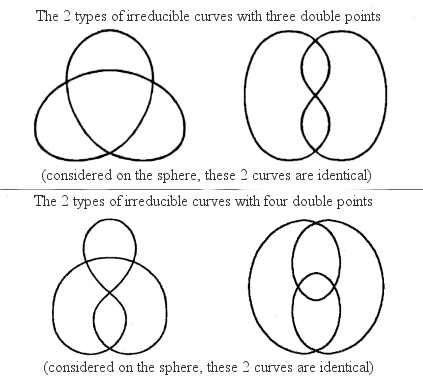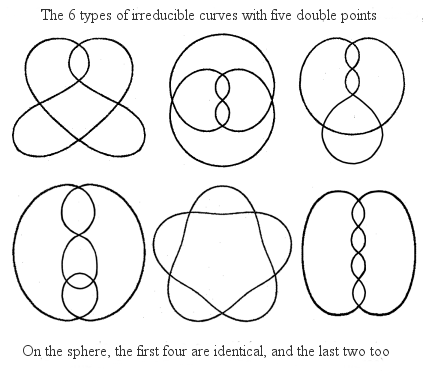GENERIC (CLOSED) CURVE
A generic (closed) curve, plane (or spherical), is (in Arnold's sense) an equivalence class of closed curves of the plane or the sphere for which the multiple points are double points with different tangents, two curves being identified if they are images of one another by a diffeomorphism of the plane (or the sphere). This notion is a generalisation of that of Jordan curve to the case where the curves have crossing points.
By closed curve we mean, here, the image C of [0,1] by an application f of
[0,1] into the plane (or the sphere), of class C1, the derivative of which never vanishes, such that f (0) = f (1)
and f ' (0) = f ' (1). The condition for the multiple points to have different tangents can be written: for all point M of C, there exist either one or two values t1 and t2 in [0,1[ such that f(t1)
= f(t2) and in this case,  are not collinear.
are not collinear.
The distinction between plane curve or curve traced on the sphere is important; for example, an eight  is equivalent to a limaçon with a loop
is equivalent to a limaçon with a loop  on the sphere but not in the plane.
on the sphere but not in the plane.
Here are various interesting cases providing a classification of generic curves:
1) the (necessarily finite) number n of double points; they determine n + 2 regions of the plane, and the curve is the reunion of 2n arcs joining two consecutive double points.
2) the rotation index (see the
notations): , counting the number of times that the tangent completes a whole turn on itself. , counting the number of times that the tangent completes a whole turn on itself.
It can be proved that  and that n and N have opposite parity. and that n and N have opposite parity.
These properties are consequences of the following result (Whitney formula): given a path on the curve, a double point is said to be positive if, in the second passage by this double point, the first passage had been made from left to right, and negative otherwise. If n+ is the number of positive double points and n- the number of negative ones, then N = |n+
- n-| ± 1.
3) the Gauss diagram (see the article above). |
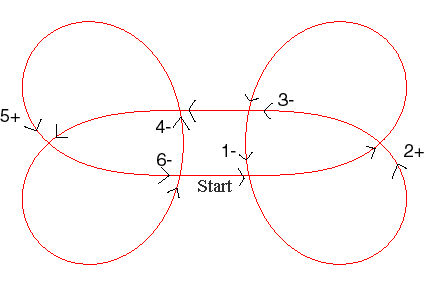
Here there are n = 6 double points, 8 regions, 12 arcs.
Rotation index N = 3 = |2 - 4|+1 |
A generic curve is said to be irreducible if it is still connected after removing one of its double points (for example, an eight is not irreducible).
Below, a classification of the plane and spherical irreducible generic curves having up to 7 double points:
0 double point: 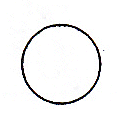 , none with only 1 or 2 double points,
, none with only 1 or 2 double points,
| n = 6 (Arnold 1994): 5 spherical curves providing 22 plane irreducible curves |
n = 7 (Guy Valette 2004): 13 spherical curves providing 78 plane irreducible curves |
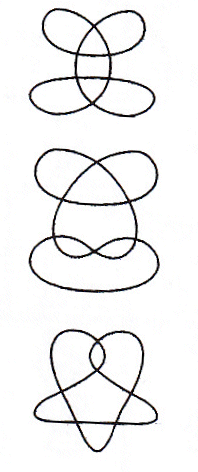 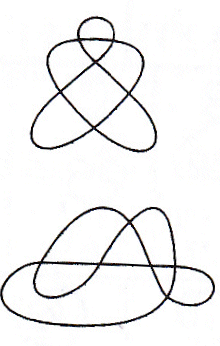
|
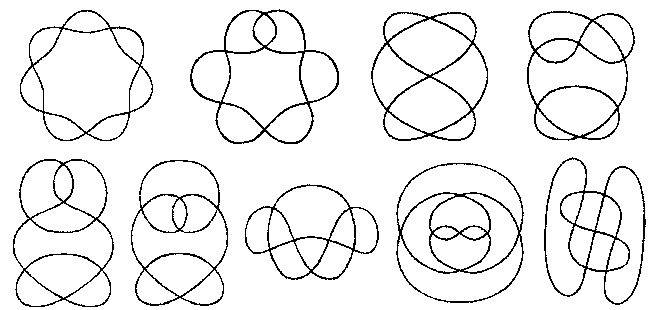

|
Compare to prime knots.
See Goursat curve for the classification of generic curves with n double points having the symmetries of a regular n-gon.
© Robert FERRÉOL
2017

 , none with only 1 or 2 double points,
, none with only 1 or 2 double points,
